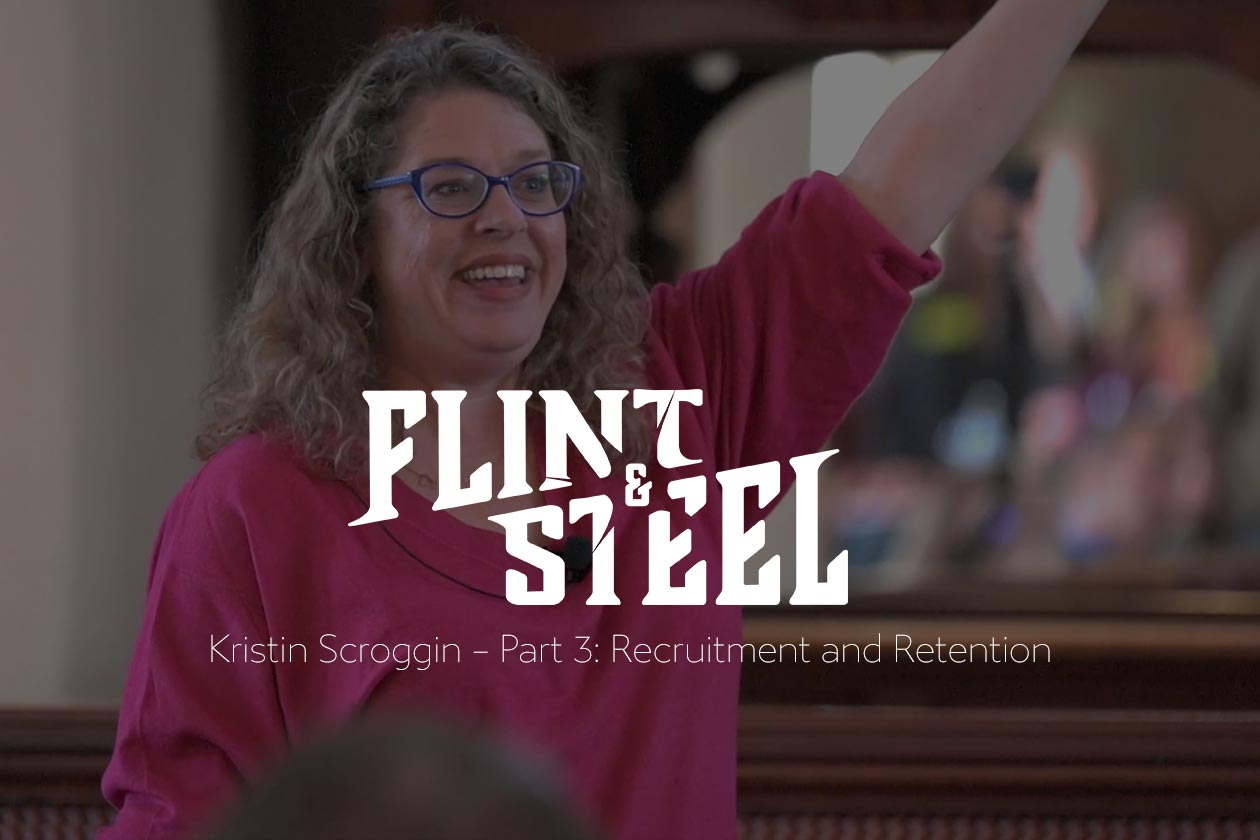Part 3: Recruitment and Retention
Welcome back to part 3 of our three-part series wrapping up our recent Flint & Steel live discussion with Kristin Scroggin looking at how generational diversity affects employee behavior within the workspace, and what managers and business owners need to know in order to support employee cohesiveness and maximize each groups effectiveness within the organization.
In parts 1 and 2 we looked first at the different generational demographics and how to quickly build a game plan to handle conflict and bring them together as a cohesive team. Now, in part 3, we’ll focus on how as an owner or manager, you can both build and keep that team together through targeted recruitment and long-term retention.
When it comes to recruiting a solid team, a good hiring manager needs to recognize that part of the initial search for talent starts with recruitment messages that resonate with issues of interest across the generational demographics. Younger generations may express more interest in jobs that highlight technology and learning while older generations may find comfort in hearing about the retirement benefits or opportunities for advancement.
Consideration must also be given to what these different generational demographics value long term within an organization.
Baby Boomers:
Baby Boomers are nearing retirement age, so end-of-career concerns are top of mind for many of them. For this reason, finding a job that has good retirement benefits, including a 401(k) match, are highly desirable.
- Schedule flexibility
- Work from Home
- Health care/Retirement benefits
Generation X:
While not quite to retirement age yet, Gen X is already thinking about how they’re going to set themselves up after they leave the workforce, so for them, many of the retirement benefits that appeal to the boomers also appeal to them.
- Monetary gifts
- Stock options
- Gift cards
- Tuition reimbursement
- Mortgage services
- Health care
Millennials:
Millennials know they’re going to be working for a while longer, so their concerns are focused on building a good career. For that reason, they’re very interested in career development opportunities as well as benefits that prioritize a work/life balance. Some examples include:
- Career development programs
- Monetary gifts
- Opportunities to give back
- On-site daycare
- Mortgage services
- Health care
Generation Alpha:
As the newest members of the workforce, Generation Alpha are more concerned about establishing themselves within the workforce in a way that not only allows them to contribute, but in a way that works for their ideas of how work-life balance should be. For that reason, flexibility is their number one priority.
- Assistance with student debt
- Competitive salaries
- Financial incentives (regular raises and bonuses for project completions)
- Tuition reimbursement
- Formal training opportunities
In conclusion, regardless of who you are working with or where they come from in the generational timeline, finding a way to make sure everyone feels valued, seen and respected can help turn four different groups into one dynamic, cohesive team.
To learn more about generational diversity and how it is impacting the workforce, visit Kristin Scroggin online here.
And for more incredible opportunities to hear valuable lectures and presentations like this one, check out our Flint & Steel series page for future dates and programming announcements as well as catch up on previous speakers you may have missed.





